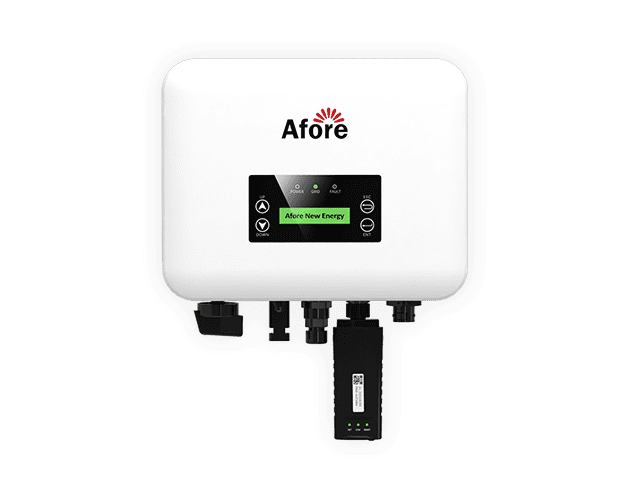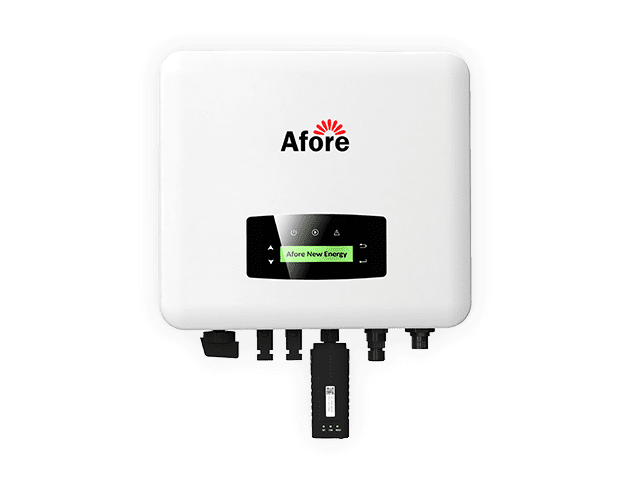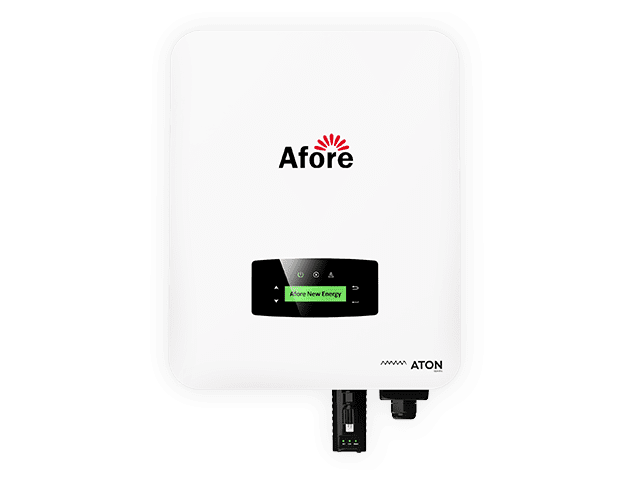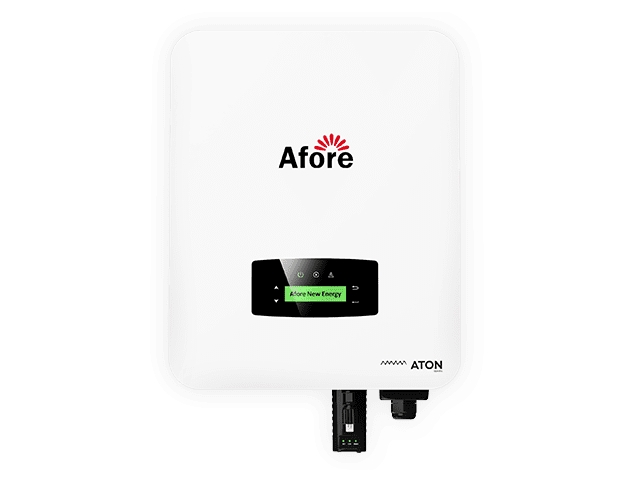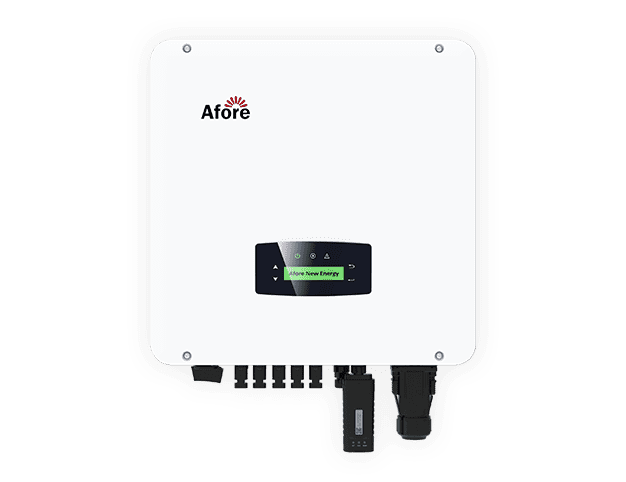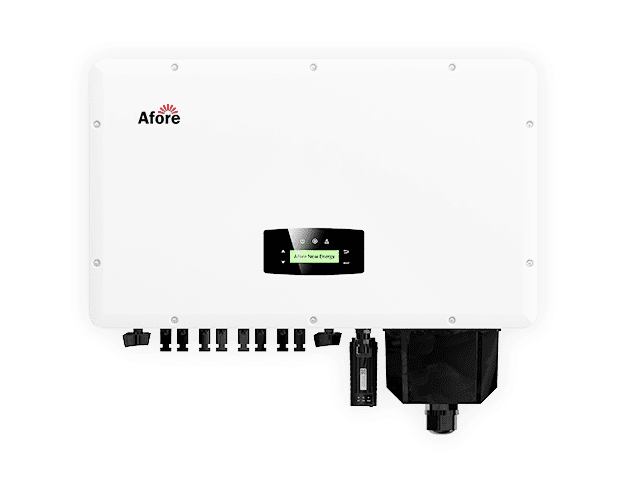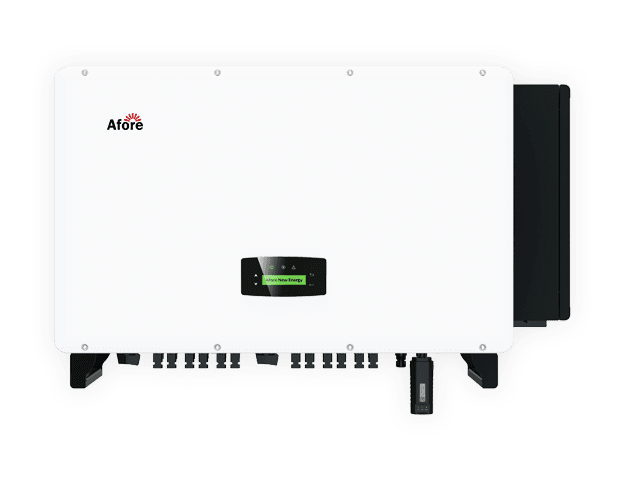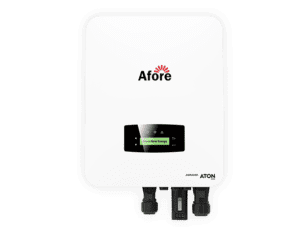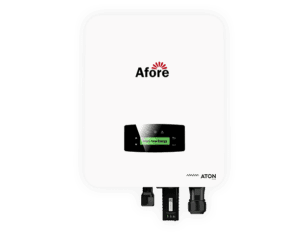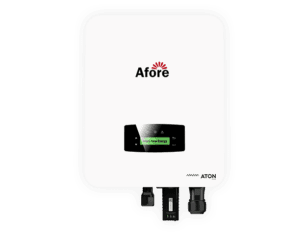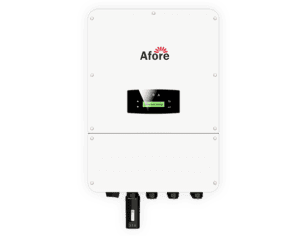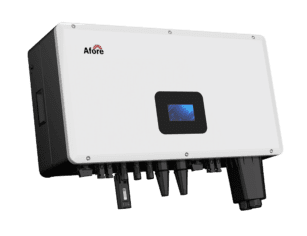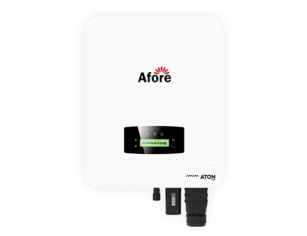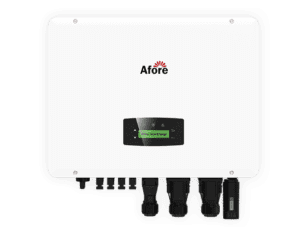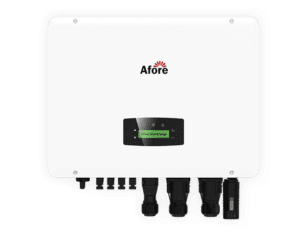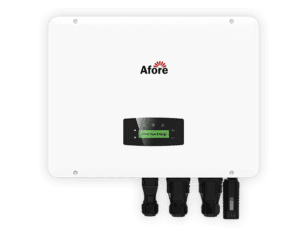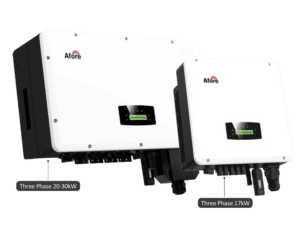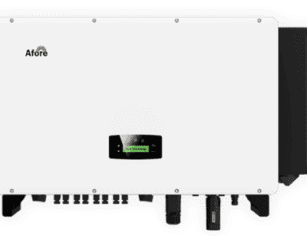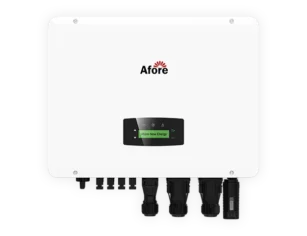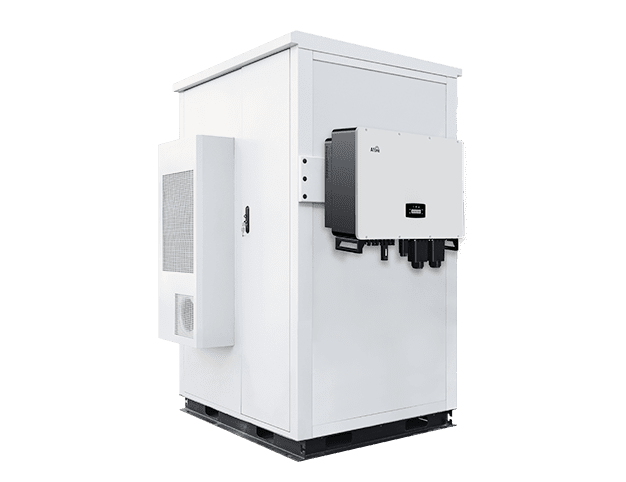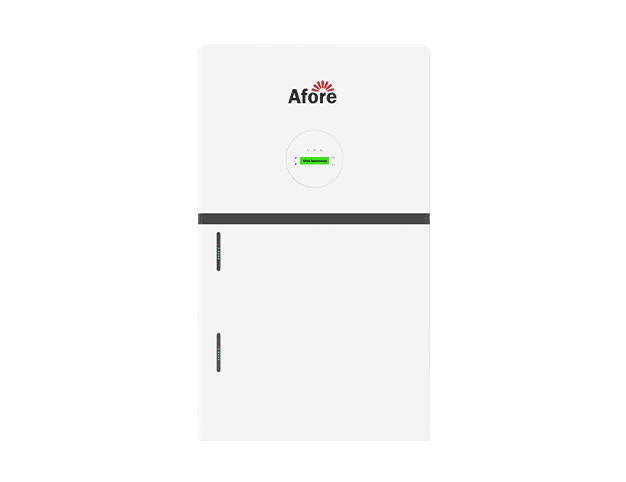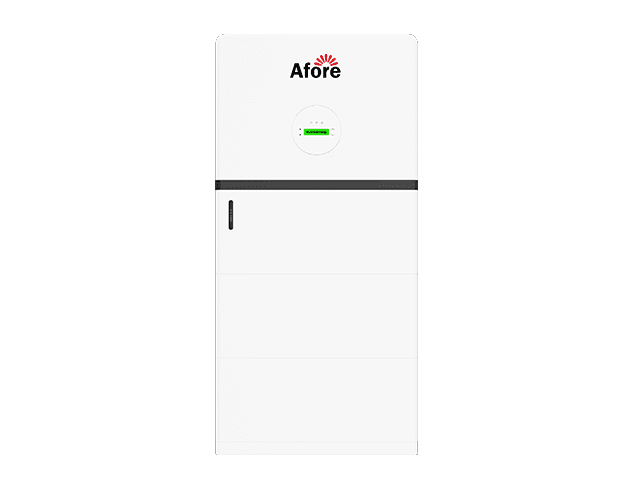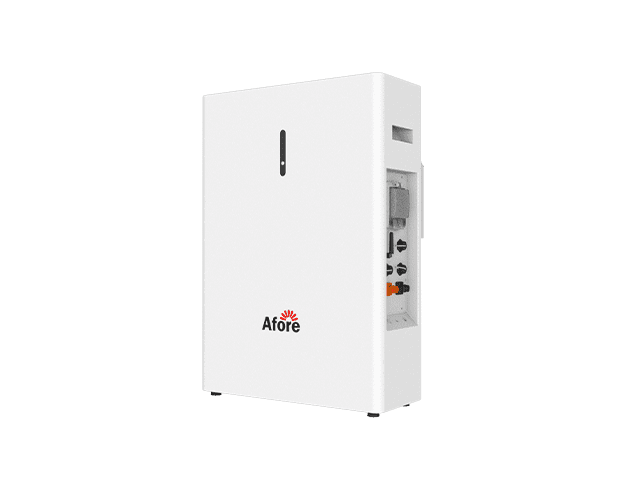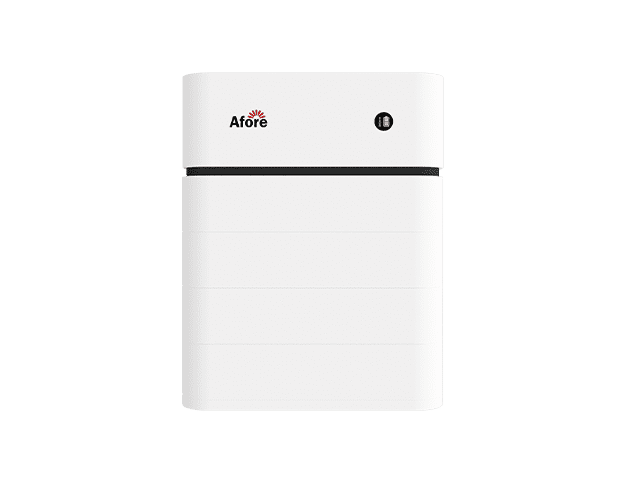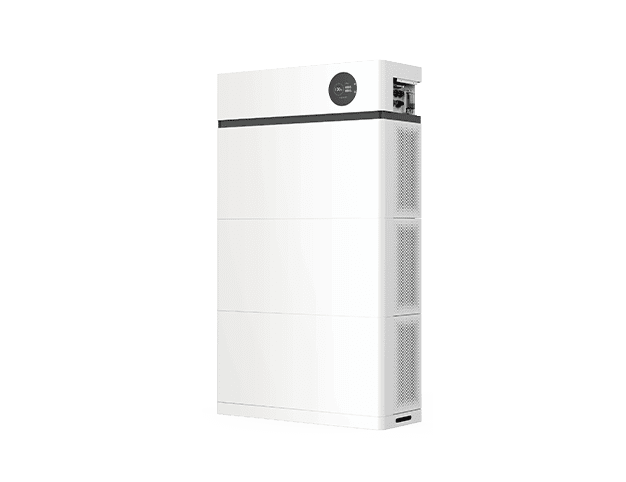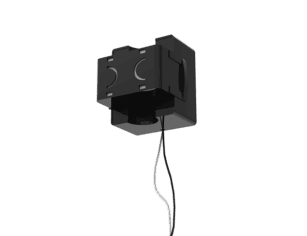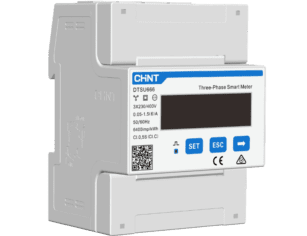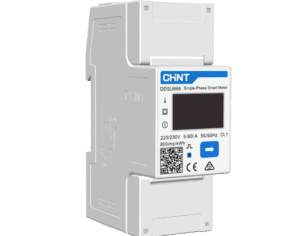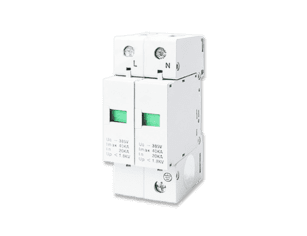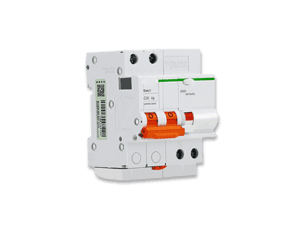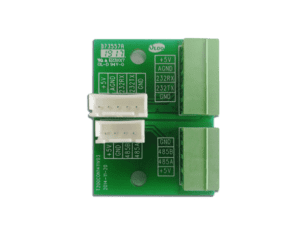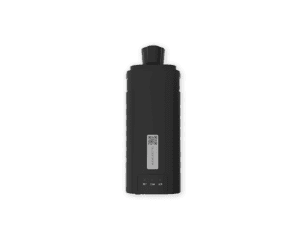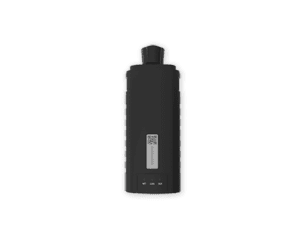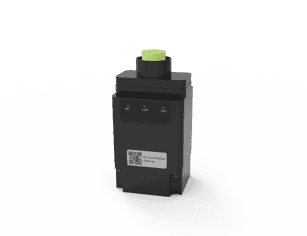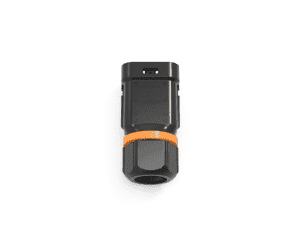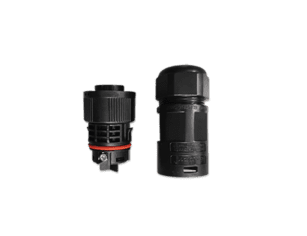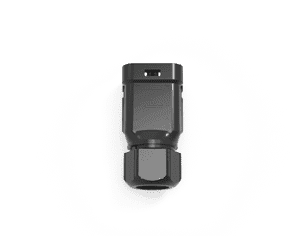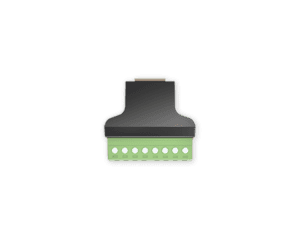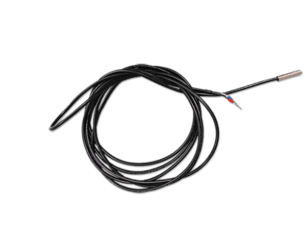¿Qué puede hacer funcionar un inversor de 600 W? Guía definitiva sobre inversores de 600 vatios

Índice
En el mundo actual, en el que las soluciones energéticas portátiles son cada vez más esenciales, es fundamental conocer las capacidades de un inversor de 600 W. Ya sea para acampar, prepararse para emergencias o configurar un sistema aislado de la red, un inversor de 600 W puede ser una fuente de alimentación fiable para varios aparatos de bajo vataje.
Conceptos básicos de una fuente de alimentación de 600 W
¿Qué es un inversor de 600 W?
Un inversor de 600w es un dispositivo que convierte la corriente continua (CC) de una batería en corriente alterna (CA), que es la forma estándar de electricidad utilizada por la mayoría de los electrodomésticos. Esta conversión permite alimentar dispositivos de CA utilizando una fuente de alimentación de CC, como una batería de coche o un sistema de paneles solares.
Diferencia entre un inversor de 600 W y una fuente de alimentación de 600 W
Es importante distinguir entre un inversor de 600 vatios y una fuente de alimentación de 600 vatios. Aunque ambos proporcionan 600 vatios de potencia, una fuente de alimentación de 600 vatios se refiere normalmente a un dispositivo que convierte CA en CC, utilizado habitualmente en ordenadores de sobremesa. En cambio, un inversor de 600 W convierte CC en CA, lo que permite utilizar aparatos de CA estándar en entornos móviles o aislados de la red.
Tipos de inversores de 600 vatios: Onda sinusoidal pura frente a onda sinusoidal modificada
A la hora de elegir un inversor de 600 vatios, encontrará dos tipos principales:
- Inversores de onda sinusoidal pura: Producen una onda de electricidad suave y uniforme, similar a la que obtendría de una compañía eléctrica. Son ideales para aparatos electrónicos delicados, como ordenadores portátiles y equipos médicos.
- Inversores de onda sinusoidal modificada: Estos producen una onda más entrecortada y son adecuados para aparatos menos sensibles. Suelen ser más asequibles, pero puede que no funcionen bien con determinados aparatos.
Si le interesa saber más sobre cómo se fabrican los inversores solares y la tecnología que hay detrás de ellos, puede consultar esta guía detallada de un fabricante líder de inversores solares. Ofrece información sobre la construcción de los inversores y los factores de calidad, ayudándole a tomar una decisión informada".
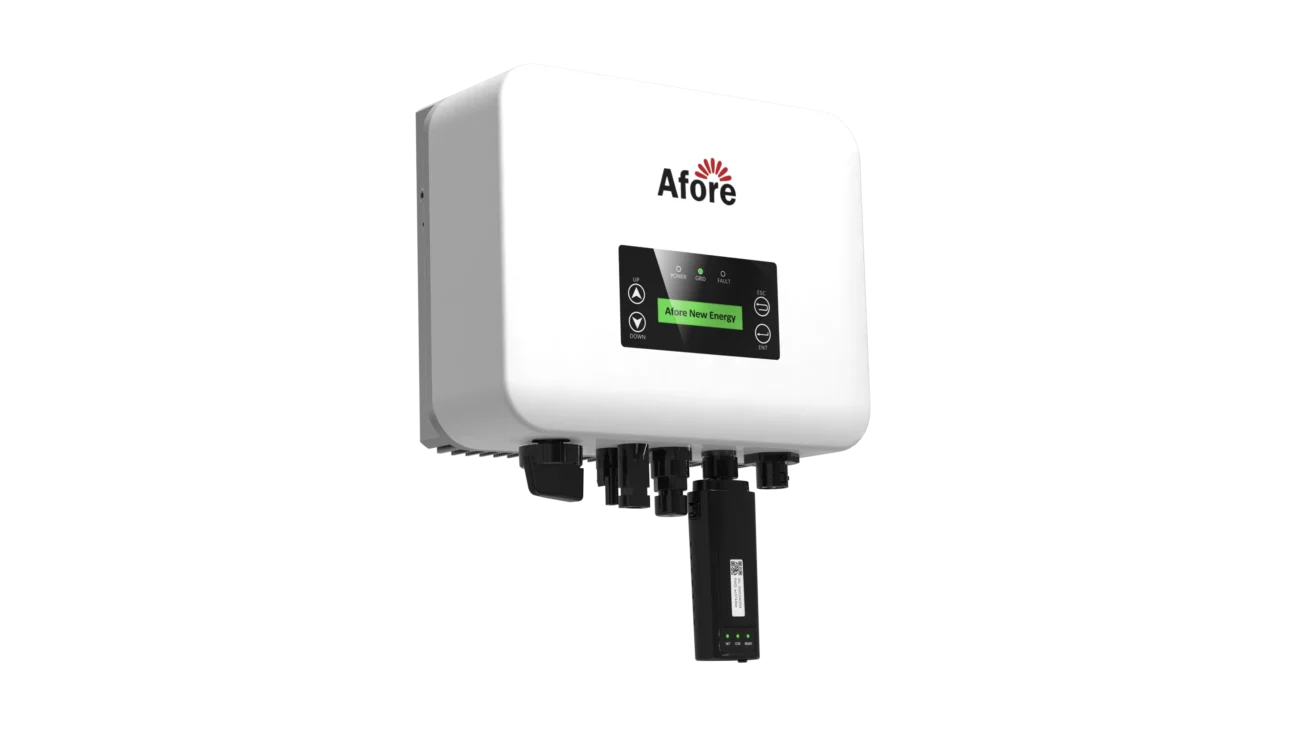
¿Qué puede hacer funcionar un inversor de 600 vatios?
Le sorprenderá lo versátil que puede ser un inversor de 600 vatios, sobre todo si conoce sus capacidades y limitaciones. Ya sea que esté fuera de la red en su autocaravana, preparándose para una copia de seguridad de emergencia en casa, o simplemente tratando de ejecutar pequeños aparatos electrónicos con energía solar, un inversor de 600 vatios golpea ese punto dulce entre potencia y portabilidad.
Dispositivos cotidianos que puede manejar un inversor de 600 W
Empecemos por lo básico. Un inversor de 600 vatios es ideal para hacer funcionar aparatos electrónicos y electrodomésticos de potencia baja a moderada. Piense en los artículos que podría llevarse de acampada o utilizar durante un apagón. Algunos ejemplos comunes son:
- Cargadores de smartphones, tabletas y portátiles (20 W-100 W)
- Televisores LED (normalmente de 60 a 120 W)
- Routers y módems Wi-Fi
- Ventiladores portátiles y pequeñas lámparas de escritorio
- Afeitadoras eléctricas, cargadores de teléfono y altavoces Bluetooth
- Pequeños electrodomésticos de cocina como una batidora de 300 W o una cafetera de 500 W (brevemente)
Una regla práctica: si su aparato consume menos de 500 W de forma continua, por lo general es seguro utilizarlo con un inversor de 600 W. Deja siempre margen para los picos de arranque: algunos aparatos, como los mini frigoríficos y los electrodomésticos más antiguos, necesitan más potencia para arrancar que para funcionar.
Camping, autocaravanas y aplicaciones aisladas
Un inversor de 600w es increíblemente popular en la comunidad de autocaravanas y furgonetas. Le permite llevar consigo muchas de sus comodidades diarias sin tener que invertir en un inversor o un banco de baterías enorme. Cuando se combina con una batería de ciclo profundo de 12 V, una fuente de alimentación de 600 W puede permitirle funcionar:
- Iluminación interior
- Mantas eléctricas o almohadillas térmicas (hasta 150 W)
- Cargadores USB y ventiladores
- Un pequeño frigorífico de 12 V (con una gestión cuidadosa de la sobretensión)
- Consolas de juegos portátiles o reproductores de DVD
Si confías en la energía solar, la integración de una fuente de alimentación de 600 vatios con un regulador solar y un par de baterías de 100 Ah te ofrece una cobertura sólida de un día para otro, en función de la exposición al sol y los hábitos de uso.
¿Y los electrodomésticos de cocina?
¿Se puede enchufar el microondas a un inversor de 600 vatios? La verdad es que no. La mayoría de los microondas empiezan con 700 W y van subiendo a partir de ahí, y eso sin contar la sobretensión de arranque. Pero algunos pequeños utensilios de cocina pueden funcionar, como las sandwicheras, las ollas de cocción lenta en caliente o un molinillo de café compacto.
Comprueba siempre la etiqueta de potencia antes de enchufar nada. Un inversor de 600 vatios puede alimentar técnicamente un aparato de 550 vatios, pero si la potencia nominal no es suficiente, el inversor se desconectará. Por eso se recomienda un inversor de onda sinusoidal pura de 600 vatios para cualquier aparato con motor o compresor: es más suave con el equipo y mejor para los aparatos electrónicos sensibles.
Equipos médicos y uso seguro
Si utiliza un inversor de 600 W para prepararse para una emergencia, puede salvarle la vida, literalmente. Las máquinas CPAP pequeñas (normalmente de menos de 90 W), los cargadores de baterías para dispositivos médicos y los sistemas de iluminación esenciales pueden funcionar de forma segura. Eso sí, ten cuidado con cualquier cosa crítica: prueba siempre tu configuración antes de confiar en ella durante un apagón.
Además, algunas fuentes de alimentación de 600 W incorporan puertos USB y protección de corte por bajo voltaje, lo que es excelente para la fiabilidad médica y la longevidad de la batería.
Limitaciones: Qué NO ejecutar
A pesar de su flexibilidad, existen ciertos límites. Un inversor de 600 vatios no está diseñado para hacer funcionar equipos de alta potencia. Aquí tienes una lista de elementos que debes evitar:
- Microondas
- Secadores de pelo
- Calefactores
- Frigoríficos de tamaño normal
- Herramientas eléctricas como sierras circulares o taladros
- Tostadoras o hervidores eléctricos
Estos artículos suelen requerir 1.000 W o más, especialmente durante el arranque. Incluso si la potencia en funcionamiento parece cercana, la sobretensión inicial probablemente superará las capacidades de su inversor de 600 W y podría causar paradas o incluso daños permanentes.
Ejemplo de uso real
Tomemos este ejemplo: Sarah vive en una pequeña casa alimentada por una modesta instalación solar. Utiliza un inversor de 600 vatios para cargar su portátil, hacer funcionar un pequeño proyector y una manta eléctrica por la noche. Durante el día, cambia a la carga solar directa para su teléfono y su batería portátil. Su instalación incluye una fuente de alimentación de 600 vatios conectada a dos baterías AGM de 100 Ah, que le proporcionan unas 6-7 horas de funcionamiento activo con una carga moderada antes de recargar.
Otro ejemplo: Ivan utiliza un inversor de 600 vatios en su cabaña de pesca. Alimenta su iluminación LED, una radio compacta e incluso una pequeña nevera para el cebo. No es una gran potencia, pero hace su trabajo de forma silenciosa y fiable.
¿En resumen? Puede que un inversor de 600 vatios no alimente toda la casa, pero es más que capaz de hacer funcionar lo esencial, sobre todo si lo combina con las baterías adecuadas y gestiona las cargas de forma inteligente. Se trata de saber lo que puede soportar, conocer sus necesidades energéticas y utilizarlo estratégicamente.
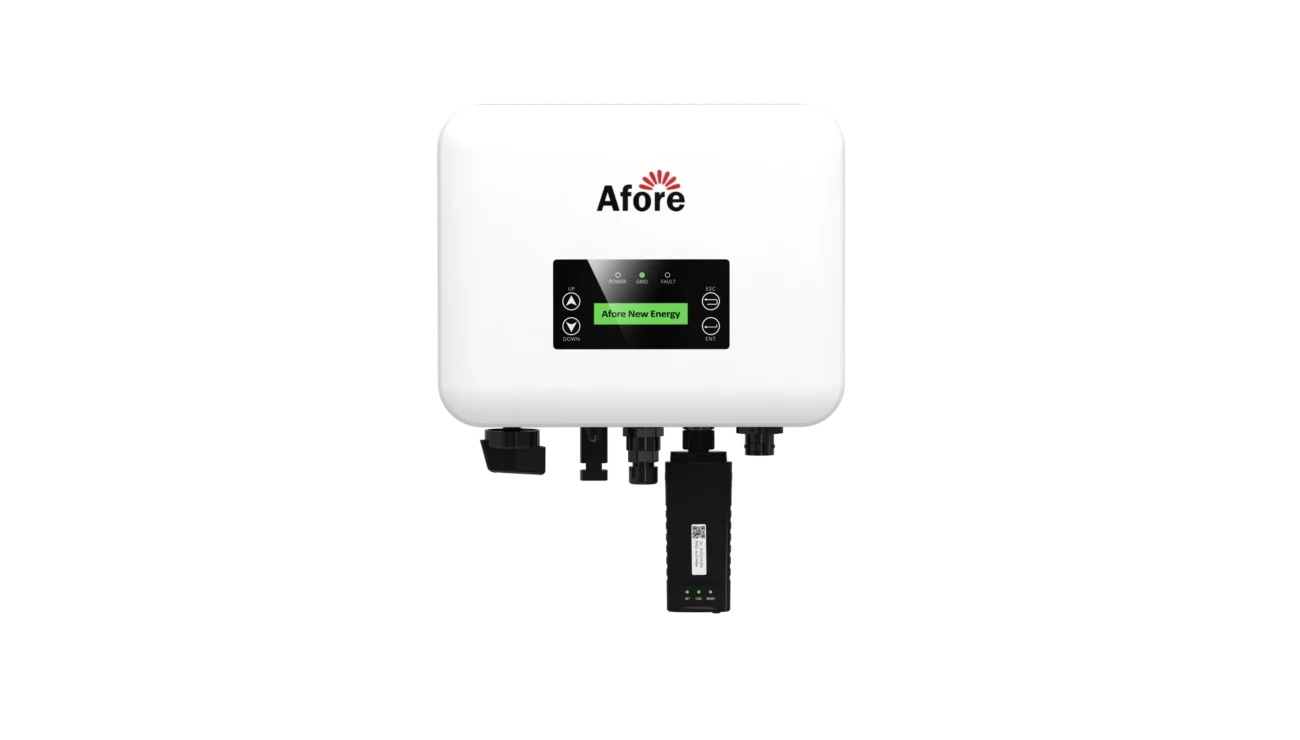
Tamaño de la batería para un inversor de 600 W
¿Cuántas baterías necesita un inversor de 600 vatios?
El número de pilas necesarias depende de:
- Duración del uso: Cuánto tiempo piensas utilizar tus dispositivos.
- Capacidad de la batería: Medida en amperios-hora (Ah), indica cuánta energía puede almacenar una batería.
Por ejemplo, hacer funcionar una carga de 600 vatios durante 1 hora requiere 600 vatios-hora (Wh). Utilizando una batería de 12 V:
- 600 Wh ÷ 12V = 50 Ah
Por lo tanto, una batería de 12 V y 100 Ah proporcionaría aproximadamente 2 horas de autonomía a plena carga.
Tipos de baterías: Ciclo profundo, litio, AGM y más
- Baterías de ciclo profundo: Diseñadas para descargas profundas regulares, ideales para inversores.
- Baterías de litio: Ofrecen mayor eficiencia y vida útil, pero son más caras.
- Baterías AGM: No necesitan mantenimiento y rinden bien a distintas temperaturas.
Para comprender mejor cómo funcionan los inversores de almacenamiento de energía con estos tipos de baterías y cómo pueden ampliar la eficiencia de su sistema, consulte este recurso en inversores de almacenamiento de energía. Explica cómo estos inversores gestionan la energía de las baterías para sistemas aislados y de respaldo".
Requisitos de tensión y capacidad
Asegúrese de que su banco de baterías coincide con la tensión de entrada del inversor (normalmente 12 V) y tiene capacidad suficiente para satisfacer sus necesidades energéticas.
Consejos de cableado y conexión para un rendimiento óptimo
- Utilice cables del tamaño adecuado para minimizar la caída de tensión.
- Instale un fusible entre la batería y el inversor por seguridad.
- Asegúrese de que las conexiones sean seguras y estén limpias para evitar pérdidas de potencia.
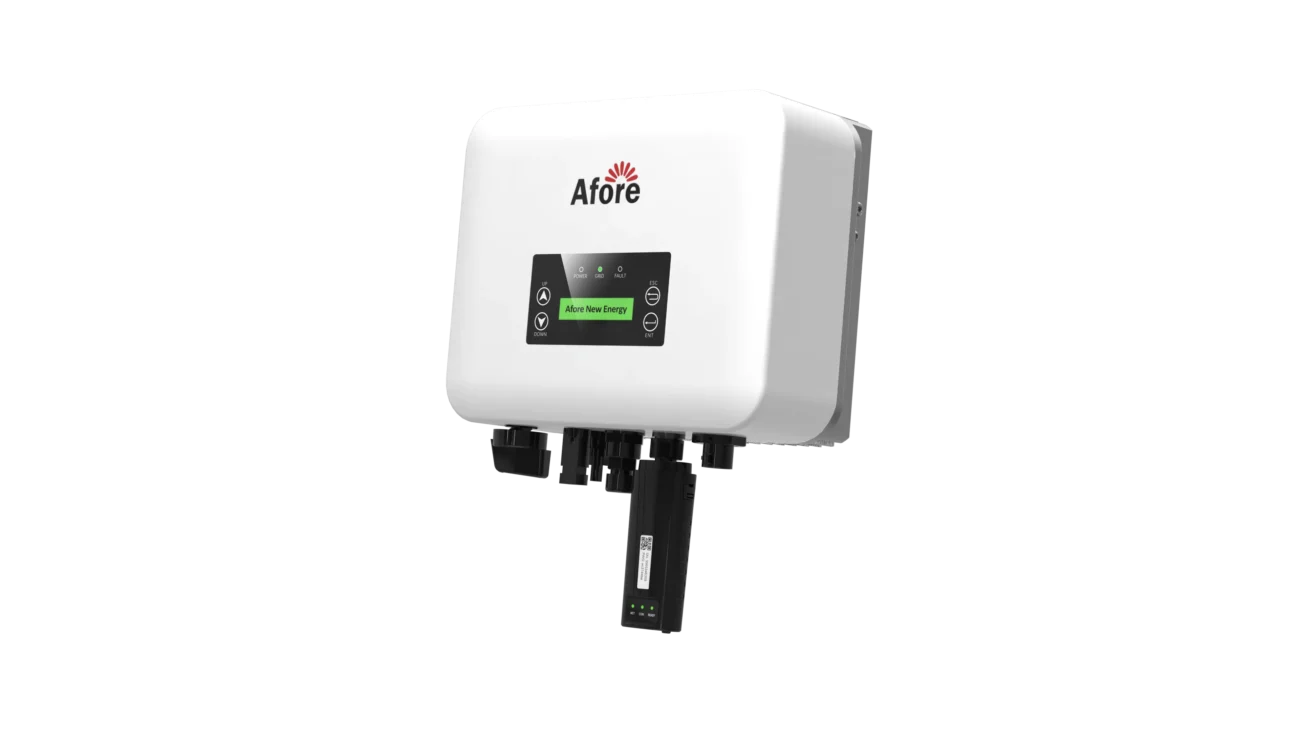
Autonomía y eficiencia de un inversor de 600 W
Cuando se trata de utilizar un inversor de 600w, siempre surgen dos preguntas: "¿Cuánto durará?" y "¿Qué eficiencia tiene?". No se trata sólo de detalles técnicos, sino que afectan directamente al rendimiento de la instalación, a su fiabilidad y a la forma de planificar el uso de la energía, especialmente si está aislado de la red o utiliza energía solar. Veámoslo en términos del mundo real.
¿Cuánto dura un inversor de 600 W?
La autonomía de su inversor de 600 vatios depende de algunos factores clave:
- Capacidad de la batería (medida en amperios-hora, o Ah)
- Tensión de la batería (normalmente 12 V o 24 V)
- Consumo real (no sólo la potencia nominal del inversor)
- Eficacia del inversor
- Profundidad de descarga (DoD) de sus baterías
Hagamos unos cálculos rápidos. Si usted está usando una batería de 12V nominal de 100Ah, usted tiene:
- 12V × 100Ah = 1200 vatios-hora (Wh) de energía utilizable
- Si tus dispositivos consumen 600 W de forma constante:
1200Wh ÷ 600W = 2 horas de autonomía
Pero esto es un máximo teórico. En la vida real, la eficiencia del inversor y los límites de la batería reducen esta cifra.
La mayoría de los inversores de 600 W funcionan con un rendimiento de 85% a 92%, dependiendo de la marca y de si se trata de un modelo de onda sinusoidal pura o de onda sinusoidal modificada. Por tanto, perderá un poco de energía durante la conversión, entre 8 y 15%. Teniendo esto en cuenta, la autonomía real se reduce a unas 1,7 horas con una batería de 100 Ah.
Supongamos que sólo utilizas una carga de 300 W, como un portátil, un ventilador y las luces. De repente, esa misma batería puede alimentar tu sistema durante más de 4 horas, suponiendo una eficiencia moderada y una batería en buen estado.
Si utiliza paneles solares en tándem, su inversor de 600 vatios puede funcionar mucho más tiempo, a veces indefinidamente durante el día, dependiendo de cuántos vatios produzcan sus paneles y de lo rápido que recarguen las baterías.
¿Cuál es la eficiencia de un inversor de 600 W?
La eficiencia de un inversor no sólo consiste en ahorrar energía, sino que también determina la cantidad de energía que realmente llega a sus dispositivos. Un inversor de 600 W de buena calidad puede convertir unos 90-92% de la energía de la batería de CC en energía de CA utilizable. ¿El resto? Se pierde en forma de calor.
He aquí por qué es importante:
- Mayor eficiencia = mayor autonomía y menor carga de la batería
- Menor eficiencia = más calor, agotamiento más rápido de la batería y posible apagado del inversor.
Los inversores de onda sinusoidal pura suelen ser más eficientes y fiables que las versiones baratas de onda sinusoidal modificada. No solo gastan menos energía, sino que también son mucho más seguros para los componentes electrónicos sensibles.
Por ejemplo, si utiliza una fuente de alimentación de 600 vatios para alimentar un ordenador portátil, un router y un sistema de iluminación LED, un inversor de onda sinusoidal pura garantiza un voltaje y una frecuencia estables. Tus dispositivos durarán más y evitarás problemas molestos como zumbidos, luces parpadeantes o sobrecalentamiento de los adaptadores.
Potencia de sobretensión frente a potencia continua
Algo que muchos usuarios pasan por alto es la diferencia entre potencia continua y sobretensión. Mientras que un inversor de 600 vatios puede soportar una carga continua de 600 vatios, normalmente puede soportar una sobrecarga de hasta 1.200 vatios durante unos segundos. Esto es especialmente importante para aparatos con motores o compresores, como mini neveras o pequeñas bombas de agua.
Si utiliza estos aparatos, aunque sea temporalmente, compruebe la capacidad de sobretensión del inversor. Si los picos de tensión superan la capacidad del inversor -incluso durante un segundo-, puede apagarse o, peor aún, estropearse.
Así que, aunque el inversor de 600 vatios pueda "hacer funcionar" técnicamente un mini frigorífico, todo depende de la sobretensión de arranque del frigorífico. Por eso es crucial conocer tanto la eficiencia como la capacidad de sobretensión antes de enchufar nada.
Potencia calorífica y pérdida de eficiencia
Como cualquier componente eléctrico, los inversores generan calor, y el calor equivale a pérdidas. Un inversor barato de 600 W con una refrigeración deficiente puede caer por debajo de la eficiencia 80% después de funcionar de forma continua durante una hora, especialmente con una carga pesada. Por eso los inversores de alta eficiencia suelen incluir:
- Ventiladores integrados o refrigeración térmica controlada
- Funciones de protección contra sobrecalentamiento
- Disipadores de aluminio para refrigeración pasiva
No sólo protegen su sistema, sino que también mantienen un alto índice de eficiencia incluso en climas más cálidos o en espacios compactos como armarios de vehículos recreativos o cajas de baterías.
Consejos para maximizar la autonomía y la eficacia
Para sacar el máximo partido a tu fuente de alimentación de 600 W, ten en cuenta los siguientes consejos:
- Dimensione correctamente su batería: No combine un inversor de 600 W con una batería diminuta de 35 Ah. Elige una de al menos 100 Ah para un uso moderado durante unas horas.
- Si es posible, opta por la energía solar: Una instalación de paneles solares de 200-400 W puede mantener el sistema a pleno rendimiento durante todo el día.
- Utiliza aparatos de bajo consumo: Las luces LED, los ventiladores de bajo consumo y los electrodomésticos de corriente continua te ayudan a alargar la duración de la batería.
- Minimiza las cargas fantasma: Dispositivos como cargadores y adaptadores pueden consumir energía aunque no se utilicen activamente.
¿Puede un inversor de 600 W alimentar un frigorífico u otros aparatos de gran potencia?
Requisitos para la sobrecarga de arranque
Muchos electrodomésticos necesitan una mayor potencia para arrancar. Por ejemplo, un frigorífico puede necesitar 1.200 vatios momentáneamente, lo que supera la capacidad de un inversor de 600 vatios.
Pruebas reales con frigoríficos pequeños
Algunos frigoríficos compactos con menores picos de arranque pueden funcionar con un inversor de 600w. Sin embargo, es esencial comprobar las especificaciones del fabricante.
Soluciones alternativas para el funcionamiento de aparatos grandes
Para aparatos de gran potencia:
- Utilice un inversor más grande: Considere un inversor de 1000w o 1500w.
- Fuentes de alimentación específicas: Utiliza generadores o tomas de tierra cuando estén disponibles.
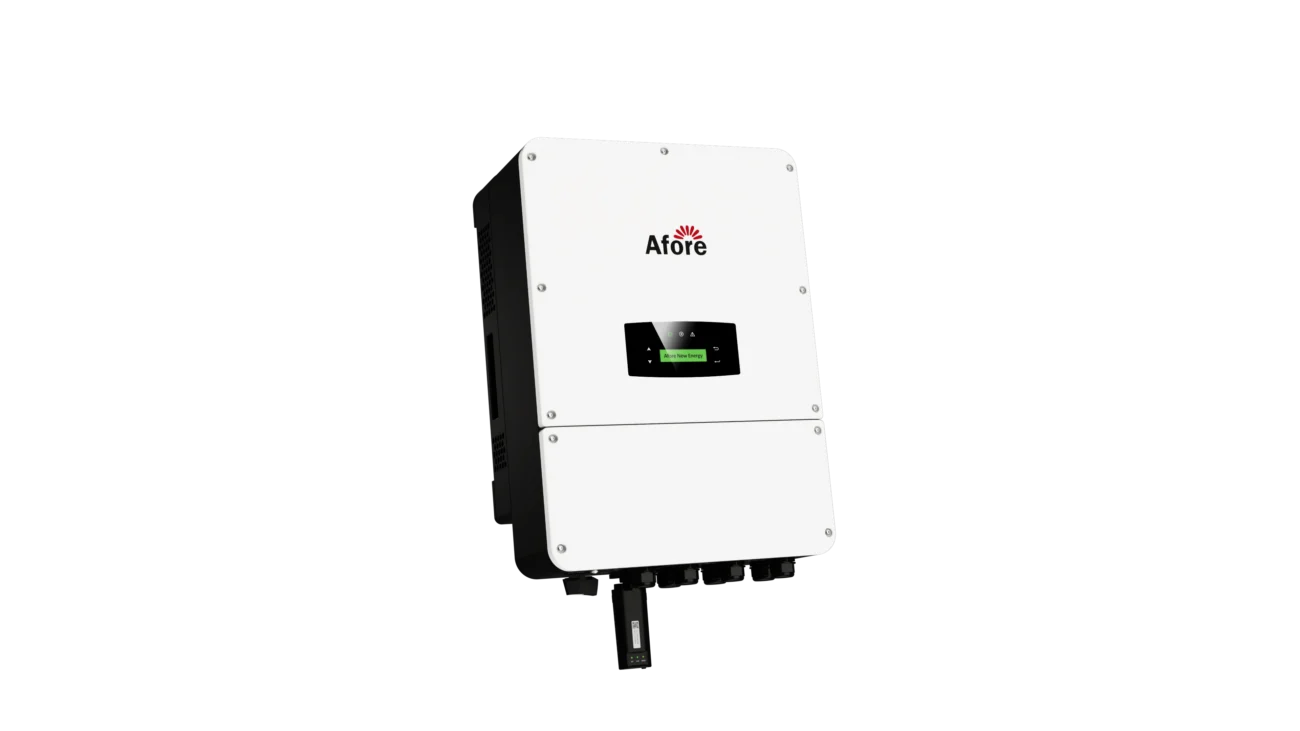
Elegir el inversor de 600 W que mejor se adapta a sus necesidades
La compra de un inversor de 600 W puede parecer sencilla a primera vista: al ver "600 W" en la caja, piensas que alimentará todo lo que necesites, ¿verdad? Pues no. No se trata sólo de la potencia. La verdad es que no todos los inversores de 600 vatios son iguales, y elegir el incorrecto puede dar lugar a un rendimiento inferior, dispositivos dañados o incluso riesgos eléctricos. Entonces, ¿cómo elegir el correcto? Vamos a explicarlo sin rodeos.
Onda sinusoidal pura frente a onda sinusoidal modificada: ¿Cuál es la diferencia?
Una de las decisiones más importantes que tendrá que tomar es elegir entre un inversor de onda sinusoidal pura y un inversor de onda sinusoidal modificada de 600 vatios. He aquí la diferencia clave:
- Onda sinusoidal pura: Produce una forma de onda eléctrica suave y uniforme, como la que se obtiene de la red eléctrica. Ideal para aparatos electrónicos sensibles como ordenadores portátiles, televisores, máquinas CPAP e incluso algunas herramientas.
- Onda sinusoidal modificada: Más asequible, pero produce una señal eléctrica más entrecortada. Puede alimentar dispositivos básicos como luces y ventiladores, pero puede causar problemas con cualquier cosa que tenga un motor, compresor o microprocesador.
Por lo tanto, si tiene previsto utilizar un frigorífico, un equipo de audio o aparatos médicos, merece la pena gastarse un poco más en un inversor de onda sinusoidal pura de 600 vatios. Para instalaciones más sencillas, puede bastar con uno de onda sinusoidal modificada, pero ten en cuenta sus limitaciones.
La capacidad de sobrecarga importa más de lo que cree
Un inversor de 600 vatios no sólo suministra 600 vatios planos. La mayoría de los modelos también tienen una capacidad de sobretensión, normalmente de entre 1.000 y 1.200 vatios, que les permite hacer frente a breves picos de potencia. Es como arrancar un coche: la "patada" inicial necesita más potencia que la velocidad de crucero.
He aquí por qué la capacidad de sobrecarga es fundamental:
- Aparatos como frigoríficos, batidoras, herramientas eléctricas e incluso algunos televisores LED necesitan más vatios para arrancar que para funcionar de forma continua.
- Si la capacidad de sobretensión de su inversor es demasiado baja, el dispositivo podría disparar el inversor o no arrancar en absoluto.
Cuando compare fuentes de alimentación de 600 W, compruebe siempre el índice de sobretensión y ajústelo a las necesidades de arranque de su equipo.
Tensión de entrada: sistemas de 12 V frente a 24 V
La mayoría de los inversores de 600 W están diseñados para sistemas de baterías de 12 V, pero algunos también están disponibles en versiones de 24 V. La elección depende de la configuración que tengas.
- Los inversores de 12 V son ideales para coches, pequeños vehículos recreativos y sistemas básicos aislados de la red.
- Los inversores de 24 V funcionan mejor en huertos solares grandes o en aplicaciones de alta demanda porque consumen menos corriente para la misma potencia, lo que se traduce en menos calor y mayor eficiencia.
Si está construyendo una instalación solar o haciendo funcionar el inversor durante largos periodos de tiempo, una fuente de alimentación de 24 V y 600 vatios podría funcionar mejor y mantener los cables más fríos.
No ignore las características de seguridad y la calidad de fabricación
Un inversor de 600 W de alta calidad debe incluir un puñado de características de protección clave, especialmente si va a utilizarlo en vehículos, al aire libre o en instalaciones solares:
- Protección contra sobrecargas
- Desconexión por sobretemperatura
- Protección contra cortocircuitos
- Alarma y desconexión por baja tensión
- Protección contra polaridad inversa
Busque modelos con carcasas de aluminio para una mejor disipación del calor y ventiladores de refrigeración incorporados para mantener el rendimiento. Muchos de los inversores solares de Afore incluyen estas redes de seguridad.
Opciones portuarias y funciones de confort
Los inversores modernos de 600 vatios son más que simples tomas de CA. Muchos ahora vienen con:
- Puertos USB para cargar teléfonos y tabletas
- Pantallas de visualización LED que muestran los niveles de tensión y carga
- Opciones de control remoto
- Varias tomas de CA para hacer funcionar varios dispositivos a la vez
Si piensa utilizar su inversor de 600 W en una caravana, furgoneta o barco, estas características pueden marcar una gran diferencia en la comodidad del día a día. Puntos extra si tiene un diseño de toma de tierra aislada, que ayuda a evitar el ruido eléctrico y las interferencias, especialmente útil cuando se alimenta el equipo AV.
¿Para interior, móvil o exterior? Elija en función de sus necesidades
Piense dónde y cómo va a utilizar el inversor:
- Para uso doméstico, busque unidades con ventiladores silenciosos, salida de onda sinusoidal limpia y compatibilidad con baterías de ciclo profundo.
- Para autocaravanas y furgonetas, lo mejor es que sean compactas y resistentes, con opciones de montaje y bajo consumo en vacío.
- Para entornos exteriores o de construcción, céntrate en la resistencia a los golpes, las carcasas con clasificación IP y la protección contra fusibles.
Tu escenario de uso debe guiar lo que priorizas, ya sea un funcionamiento silencioso, una alta potencia de sobretensión o puertos USB-C para tus gadgets.
Adapte el inversor a su banco de baterías
Por último, adapte siempre su inversor de 600 W al tamaño de batería adecuado. Un inversor de primera no sirve de nada si la batería no puede soportar la carga. Por ejemplo, ejecutar una carga completa de 600W en una batería de 100Ah 12V sólo le dará alrededor de 1,5-2 horas de tiempo de ejecución. Si lo combina con una batería de litio del tamaño adecuado o, mejor aún, con un sistema de carga solar, no se quedará a oscuras.
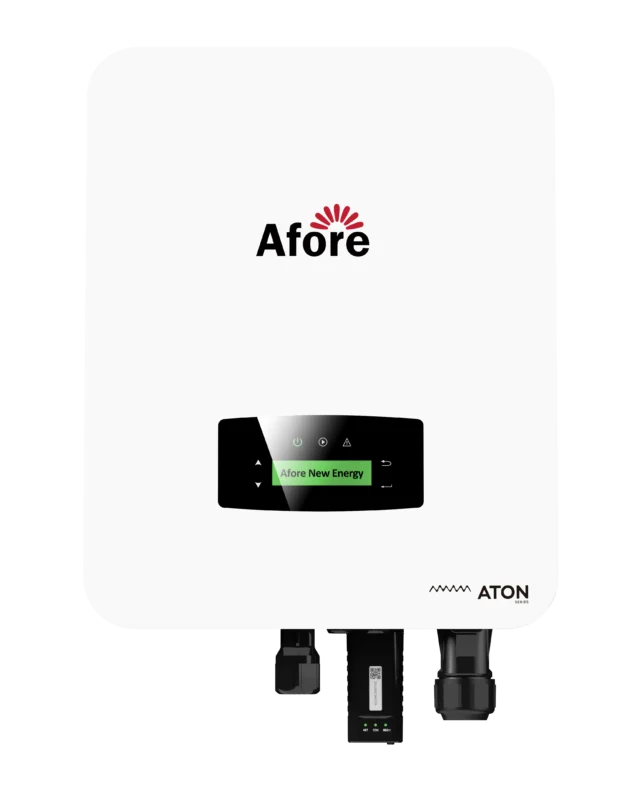
Preguntas frecuentes sobre los inversores de 600 W
¿Qué puede hacer funcionar un inversor de 600 vatios?
Un inversor de 600 vatios puede alimentar una amplia gama de aparatos de potencia baja a media. Entre ellos se incluyen:
- Ordenadores portátiles y de sobremesa
- Cargadores de teléfonos y tabletas
- Luces LED o bombillas CFL
- Televisores o monitores pequeños (normalmente de menos de 32 pulgadas)
- Consolas de videojuegos
- Ventiladores eléctricos
- Cafeteras (algunos modelos de menos de 600 W)
- Máquinas CPAP (sin calefacción)
Sin embargo, está un poco fuera de su alcance cuando se trata de suministrar energía a aparatos que requieren mucha potencia, como calefactores, frigoríficos grandes, microondas y herramientas eléctricas con motores grandes. Compruebe siempre la etiqueta de potencia de la unidad antes de enchufarla.
¿Qué tamaño de batería necesito para un inversor de 600 W?
Depende del tiempo que vaya a utilizar el inversor de 600 W. Una buena regla general es:
- Para un uso a corto plazo (1-2 horas), basta con una batería de ciclo profundo de 100 Ah y 12 V.
- Para duraciones más largas o cargas más elevadas, considere la posibilidad de utilizar varias baterías o un sistema de 24 V (que es más eficiente).
A grandes rasgos: una batería de 12V consume unos 50 amperios por hora para alimentar una carga de 600W. Por tanto, una batería de 100 Ah durará aproximadamente entre 1,5 y 2 horas (teniendo en cuenta las pérdidas por eficiencia).
¿Cuánto dura un inversor de 600 W?
El tiempo de ejecución depende de:
- El tamaño del banco de baterías
- La eficiencia del inversor de 600 vatios
- La carga real en vatios
Por ejemplo, si utiliza una carga de 300W con una batería de 12V y 100Ah, obtendrá unas 3 horas de autonomía (300W ÷ 12V = 25 amperios, 100Ah ÷ 25A = 4 horas; reste 20-25% por las pérdidas del inversor).
Si utilizas la carga completa de 600 W, la autonomía suele ser de 1,5 horas o menos con una sola batería.
¿Cuál es la eficiencia de un inversor de 600 W?
La mayoría de los inversores modernos de 600 W ofrecen una eficiencia de 85% a 92%, dependiendo de la marca y el modelo. Los inversores de onda sinusoidal pura tienden a ser ligeramente menos eficientes que las versiones de onda sinusoidal modificada debido a su salida más limpia, pero la contrapartida es una potencia más suave y segura.
La eficiencia afecta a la cantidad de energía de la batería que se convierte en electricidad de CA utilizable. Así, por cada 100 vatios que suministre el inversor, puede extraer de la batería entre 110 y 120 vatios.
¿Puede un inversor de 600 vatios hacer funcionar un frigorífico?
Depende del tipo y el tamaño del frigorífico. La mayoría de los frigoríficos de cocina de tamaño normal necesitan más de 600 W para arrancar (debido a la sobretensión del compresor), aunque su potencia de funcionamiento sea inferior.
Sin embargo, los mini frigoríficos o los modelos compactos de bajo consumo pueden funcionar bien con un inversor de 600 vatios, sobre todo si tiene una buena potencia nominal de sobretensión (1000 W o más). Compruebe siempre la potencia de arranque (sobretensión) y la potencia continua del frigorífico antes de conectarlo.
¿Puedo utilizar un inversor de 600 W con paneles solares?
Por supuesto. De hecho, los inversores de 600 W se suelen utilizar en sistemas solares pequeños. Sólo tienes que asegurarte de que tu regulador de carga solar y tu banco de baterías pueden soportar la potencia que estás consumiendo.
Por ejemplo, un conjunto de paneles solares de 600 vatios con una configuración de baterías adecuada puede suministrar energía cómodamente a un inversor de 600 vatios durante el día e incluso proporcionar energía almacenada para su uso nocturno.
¿Es lo mismo una fuente de alimentación de 600 vatios que un inversor de 600 vatios?
No es así. Una fuente de alimentación de 600 vatios suele referirse a convertidores de CA a CC (como los que se utilizan en los ordenadores de sobremesa). En cambio, un inversor de 600 vatios convierte la energía de la batería de CC en electricidad doméstica de CA. Funcionan en direcciones opuestas.
Así que cuando vaya a construir un sistema aislado o un dispositivo móvil, recuerde elegir el inversor adecuado y no cometa el error de tomarlo como una fuente de alimentación: pueden tener funciones y usos muy diferentes.
¿Qué es mejor: un inversor de onda sinusoidal pura o un inversor de onda sinusoidal modificada?
Para un inversor de 600 vatios, la onda sinusoidal pura es casi siempre la mejor opción si su presupuesto se lo permite. Produce una señal eléctrica más limpia y estable, segura para aparatos electrónicos sensibles, equipos médicos o cualquier cosa con un motor de CA.
Los inversores de onda sinusoidal modificada son más baratos, pero pueden provocar zumbidos, sobrecalentamientos o fallos de funcionamiento en determinados aparatos. Para iluminación básica y artículos no sensibles, están bien, pero para mayor tranquilidad, opte por los puros.
¿Puedo utilizar varios aparatos a la vez con un inversor de 600 W?
Sí, siempre que la potencia total de todos los dispositivos conectados no supere los 600 vatios continuos. Por ejemplo, podría funcionar:
- UN TELEVISOR DE 150 W
- Un ventilador de 50 W
- Un cargador de portátil de 60 W
- Algunas luces LED (10-15W en total)
En total, son unos 275 W, dentro de la zona segura. Pero si añades un aparato de 500 W, superarás el límite del inversor y correrás el riesgo de sobrecargarlo.
¿Cómo instalo de forma segura un inversor de 600 W?
He aquí algunos consejos para una instalación segura:
- Utilice un cableado de calibre adecuado (normalmente 4 AWG para un inversor de 600w).
- Instale un fusible o un disyuntor cerca de la batería para protegerla.
- Asegúrese de que haya una buena ventilación: no monte el inversor en una caja cerrada.
- Evite colocarlo cerca de materiales inflamables.
- Compruebe siempre la protección contra polaridad inversa y conecte a tierra el inversor correctamente si es necesario.
Si no tienes confianza con el cableado, merece la pena consultar a un electricista o instalador profesional, sobre todo si vas a integrarlo en un vehículo o un sistema solar.




